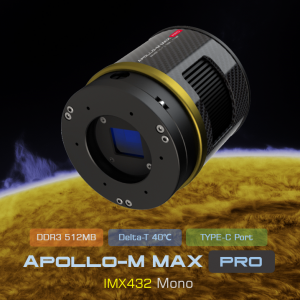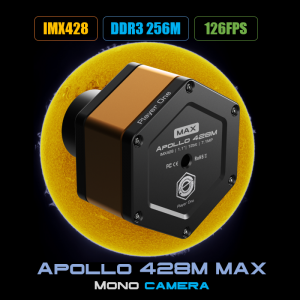Orion Solar Telescope Kits are now available from Orion Telescopes and Binoculars. These kits use a safety film solar filter which lets you safely observe sunspots as they reject harmful light from the Sun, while allowing a very small fraction of light to safely pass through.
The solar kits have been designed to work with several popular Orion telescopes including the Orion Observer 134mm Equatorial Reflector, Orion Observer 114mm Equatorial Reflector and the Orion Observer 90mm Equatorial Refractor.
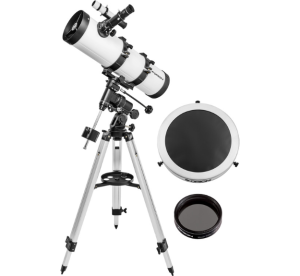
The Orion Solar Telescope Kits includes a full aperture film solar filter that fits over the front of the telescope. This Orion white-light solar filter is designed to see sunspots and granulation around the sunspots on the solar disk. Orion assures that all of its Orion Solar Telescope Kits are tested at specialized labs that are accredited to verify compliance with the ISO 12312-2 safety specifications for solar viewing.
As a note, these kits differ from solar telescopes that utilize a Hydrogen-alpha filter which pffers the ability to view solar prominence and solar flare detail. Orion, through its Coranado telescope division, offers a lineup of Coronado “H-alpha” solar telescopes that are designed to provide the ability to view and image solar prominences, flares, filaments, granularity, plages, and other solar phenomena.
The Orion Solar Telescope Kits package doesn’t stop at the Sun as it also includes a lunar filter which cuts the Moon’s glare and provides the ability to see more detail on its surface through the use of the Orion 13% Transmission Moon Filter. This easy-to-use accessory reduces glare and boosts contrast so you can enjoy more-detailed views of lunar surface features. It blocks 87% of the Moon’s brightness to provide a more comfortable view and reveal subtle details. It’s a neutral density filter that will not alter the natural color of the Moon.
In addition to the telescope OTA, the Orion Solar Telescope Kits also come with a mount and aluminum tripod, eyepieces, finder scope and more. These telescope models include:
Orion Observer 114mm Equatorial Reflector
This telescope comes with a 114mm (4.5″) parabolic primary mirror and a 500mm focal length which offers wide field of view and bright, sharp images of the lunar surface, Saturn’s rings, and deep-sky objects like the Lagoon and Orion nebulas and the Andromeda galaxy. It turdy EQ3-class equatorial mount and aluminum tripod i
Orion Observer 90mm Equatorial Refractor
This telescope offers a 90mm-diameter (3.5″), fully antireflection coated achromatic lens of 900mm focal length that deliver nice images of the Moon, planets, and brighter deep-space objects.
Orion Observer 134mm Equatorial Reflector
Offering a 134mm (5.3″) parabolic primary mirror and 650mm focal length (f/4.9), this telescope provides a wide field of view for bright, sharp images of the lunar surface, Saturn’s rings, and deep-sky objects.
You can learn more about the Orion Solar Telescope Kits here.
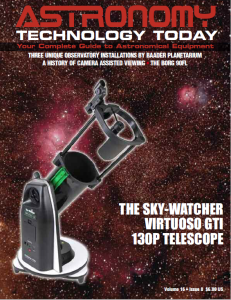
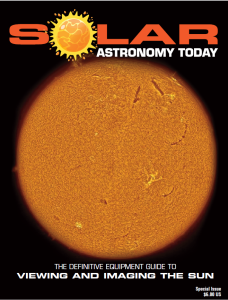 And to make it easier for you to get the most extensive news, articles and reviews that are only available in the magazine pages of Astronomy Technology Today, we are offering a 1-year magazine subscription for only $6! Or, for an even better deal, we are offering 2 years for only $9. Click here to get these deals which only will be available for a very limited time. You can also check out a free sample issue here.
And to make it easier for you to get the most extensive news, articles and reviews that are only available in the magazine pages of Astronomy Technology Today, we are offering a 1-year magazine subscription for only $6! Or, for an even better deal, we are offering 2 years for only $9. Click here to get these deals which only will be available for a very limited time. You can also check out a free sample issue here.
The Sun is more active than it’s been in years and if that’s not enough, we have the Annular Solar Eclipse on October 14, 2023 and the Total Solar Eclipse on April 8, 2024! If you’d like to learn more about the technology behind solar observing, solar imaging and more, you can check out our free publication, “The Definitive Guide to Viewing and Imaging the Sun”. You don’t have to sign up or provide any information, simply click here and enjoy reading!


